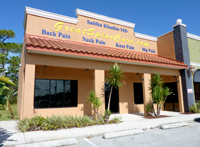Your backbone, or spine, is made up of 26 bone discs called vertebrae. The vertebrae protect your spinal cord and allow you to stand and bend. A number of problems can change the structure of the spine or damage the vertebrae and surrounding tissue. They include:
- Infections
- Injuries
- Tumors
- Conditions, such as ankylosing spondylitis and scoliosis
- Bone changes that come with age, such as spinal stenosis and herniated disks
Spinal diseases often cause pain when bone changes put pressure on the spinal cord or nerves. They can also limit movement. Treatments differ by disease, but sometimes they include back braces and surgery.
Source:
NIH: Medline Plus
Where Back Pain Begins
Vertebral discs are the spinal column’s shock absorbers. The discs cushion the vertebral bones and allow the spine to twist and bend. Vertebral discs are composed of two main parts, a softer inner nucleus (nucleus pulposis) and a tough, fibrous outer wall (annulus fibrosis).
Disc Wall Weakens
Vertebral discs can be damaged by the normal wear and aging or by traumatic injury. Problems often begin when fibers in the outer wall crack and weaken. Radial tears form in and around sensitive nerve fibers in the disc wall.
Nucleus Pushes Through Disc Wall
The disc’s soft nucleus pushes through to the outer edge of the disc wall. This causes local back pain at the disc level.
Rupture Presses Against Nerve Roots
As the herniation pushes out of the disc wall, disc material may press against the large nerve roots. This can result in pain radiating down one or both legs.
